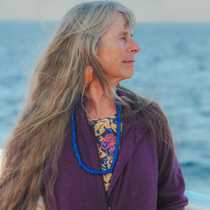Bhatia Loreto Marine Park, Islam Santa Catalina
The fickle winter winds were at play in the Gulf of California as the National Geographic Sea Bird made her way north in the San Jose Channel. The El Norte wind began a very sudden pick-up this morning at 5:00am. Captain Graves, who began his watch at 4:00am, let us know that this morning, when he came on watch the waters we were cruising in were like glass! He continued by telling us that the witching hour for wind changes has been 5:00am like clockwork each day in recent weeks. Today proved no different and our Captain was surprised at how quickly the wind came up and continued to rise throughout the morning.
At approximately 8:30am we were still making our way north with Isla Santa Catalina off our starboard bow. The expedition leader and Captain made a quick decision and our morning changed shape from our original plans. The National Geographic Sea Bird would be heading into her anchorage at Elephant Rock much earlier than planned and would remain there in the protection this bay offered throughout the day and evening. Our snorkeling was pushed up to late morning, giving the entire afternoon to explore Isla Santa Catalina, one of the more unique islands in the Gulf of California.
Once our morning drills and briefings were complete, preparations were made to anchor a snorkeling platform of two Zodiacs just inside of Elephant Rock, located off the southwest corner of Isla Santa Catalina. Shuttles began in earnest, as a very large percentage of guests braved refreshingly cool waters and cloudy skies for a chance to snorkel in one of the most productive seas on the planet. A myriad of different species of fish were spotted by snorkelers, from the flamboyant Moorish Idol, to the more sedate Giant Damsel, who’s many immature counterparts were decorated in dazzlingly iridescent blue with dots. Slowly snorkelers left the waters and shuttles ferried them back to the anchored National Geographic Sea Bird where dry clothes, warm drinks and lunch awaited everyone.
Our afternoon activities began shortly after lunch with shuttles to shore and the customary dividing into groups for a variety of hiking adventures. Long hikers headed up the main arroyo to a high ridge for spectacular views, while moderate hikers explored the arroyo and its seemingly landscaped arrangement of unusual desert plants, some only found in this part of the world. The drought deciduous shrubs were covered in a lush set of leaves, an indication of winter moisture. A parasite called Toji was in full bloom with bright red flowers attracting a sizable collection of Costa’s hummingbirds. The air was filled with the sound of humming wings and the chatter of extremely territorial hummers. They would occasionally stop, rest on a branch, and then lift off, with a spray of vocalizations aimed in our direction! It was obvious we were too close to several red flowers.
Our groups continued up the arroyo, stopping to take in the cactus forest all around us. Cactus fruit casings from last season littered the ground. Occasional winter ephemeral flowers showed a display of color, as the sun made its way west towards the Baja peninsula and sunset. Isla Santa Catalina is approximately 15 miles off of the coast of the Baja peninsula, and is home to several endemic species of plants and animals. The cactus forest of this island is unique in its display of some of the most beautifully perfect, enormous cardónes, along with the endemic giant Barrel cactus, some of which were over 6 feet in height. As we made our way deeper into the arroyos white winged doves began their late afternoon calls. Each step stirred up more doves until over a dozen of them were sitting on top of several cacti wondering who the noisy intruders were to their otherwise undisturbed world. This particular bird song reminded us that it was time to begin retracing our steps back to the beach for sunset, and eventually back to the National Geographic Sea Bird for evening activities and dinner.
What a day of abundance, from under the waters around Elephant Rock to the rich diversity of our island hikes we were just beginning to see and understand, the unique richness, of this place often and affectionately called a desert by the sea.




